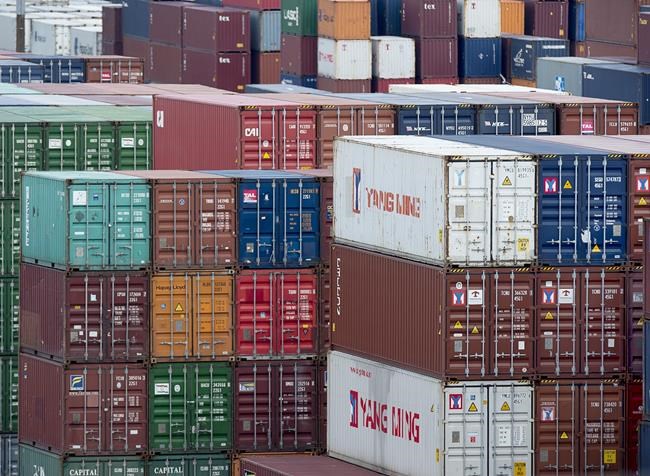Merchandise trade deficit fell to $3.3B in November, Statistics Canada reports
Advertisement
Read this article for free:
or
Already have an account? Log in here »
To continue reading, please subscribe:
Monthly Digital Subscription
$1 per week for 24 weeks*
- Enjoy unlimited reading on winnipegfreepress.com
- Read the E-Edition, our digital replica newspaper
- Access News Break, our award-winning app
- Play interactive puzzles
*Billed as $4.00 plus GST every four weeks. After 24 weeks, price increases to the regular rate of $19.00 plus GST every four weeks. Offer available to new and qualified returning subscribers only. Cancel any time.
Monthly Digital Subscription
$4.75/week*
- Enjoy unlimited reading on winnipegfreepress.com
- Read the E-Edition, our digital replica newspaper
- Access News Break, our award-winning app
- Play interactive puzzles
*Billed as $19 plus GST every four weeks. Cancel any time.
To continue reading, please subscribe:
Add Free Press access to your Brandon Sun subscription for only an additional
$1 for the first 4 weeks*
*Your next subscription payment will increase by $1.00 and you will be charged $16.99 plus GST for four weeks. After four weeks, your payment will increase to $23.99 plus GST every four weeks.
Read unlimited articles for free today:
or
Already have an account? Log in here »
Hey there, time traveller!
This article was published 07/01/2021 (1743 days ago), so information in it may no longer be current.
OTTAWA – The country’s merchandise trade deficit fell to $3.3 billion in November as gold exports rose and imports pulled back, Statistics Canada said Thursday.
The result for November followed a revised deficit of $3.7 billion for October compared with the initial reading of $3.8 billion.
Economists on average had expected a deficit of $3.5 billion for November, according to financial data firm Refinitiv.

TD Bank economist Omar Abdelrahman said the trade report sends mixed signals.
“The increase in export volumes will be a net positive for growth, and is encouraging considering the virus-related headwinds seen since the beginning of the fall,” Abdelrahman wrote in a report.
“However, the headline print masks a broad-based slowdown across seven of the 11 export categories. The notable weakness in imports also bodes ill for domestic demand.”
Statistics Canada said total exports for November rose 0.5 per cent to $46.8 billion, $1.5 billion below the pre-COVID-19-pandemic mark set in February.
The increase was helped by an 11.6 per cent increase in exports of metal and non-metallic mineral products as exports of refined gold to the United Kingdom surged higher.
Total imports fell 0.3 per cent in November to $50.1 billion, but remained above pre-pandemic levels, as imports of industrial machinery, equipment and parts decreased 3.9 per cent.
In volume terms, exports rose 0.9 per cent, while imports were down 0.7 per cent, Statistics Canada said.
Based on region, Canada’s trade deficit with countries other than the United States was $5.7 billion in November compared with $6.9 billion in October as exports rose 7.4 per cent and imports fell 1.3 per cent.
Canada’s trade surplus with the United States totalled $2.3 billion in November compared with $3.1 billion in October as exports fell 2.2 per cent and imports rose 0.3 per cent.
Statistics Canada said monthly service exports were up 1.0 per cent to $9.4 billion, while service imports edged down 0.1 per cent to $9.3 billion.
Canada’s trade deficit for goods and services combined was $3.2 billion in November.
This report by The Canadian Press was first published Jan. 7, 2021.

